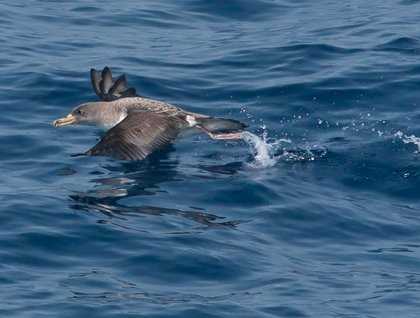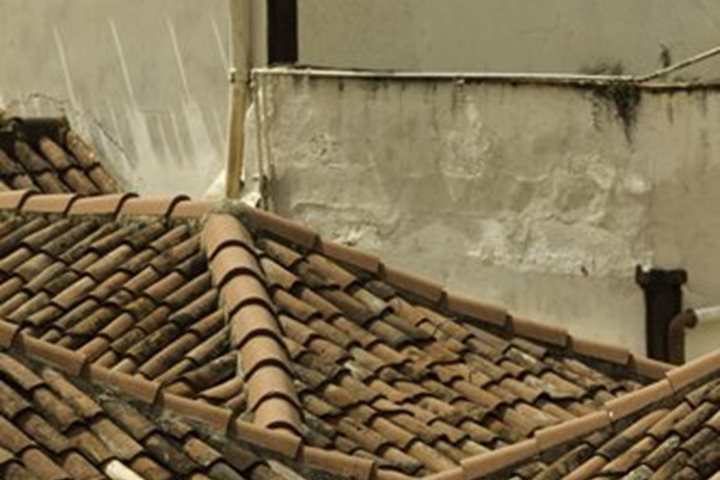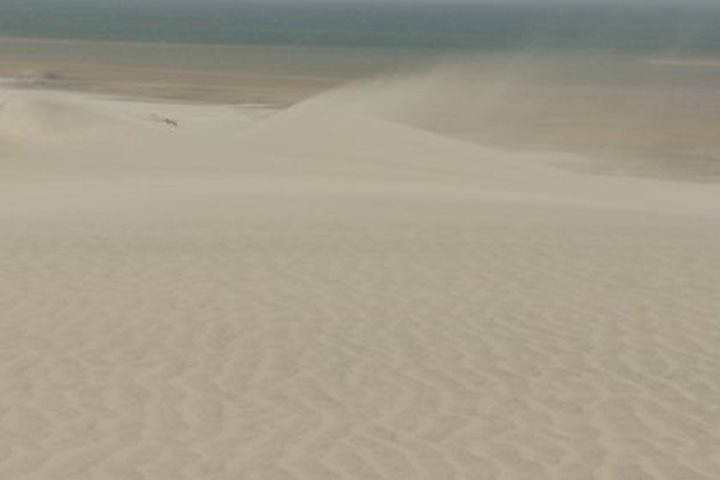Having left the Canary Islands late last night we set sail for the southern city of Agadir. This being our last full day on board National Geographic Explorer after five weeks of exploring the coast of West Africa there is a noticeable air of regret that this amazing voyage is coming to an end in short order. Talk of packing, shipping treasures acquired along the way home and soaking in those final moments with shipmates and this beautiful ocean home. Having a full day at sea to ease the transition is always nice. David Barnes, our historian, gave a presentation this morning on Charles Darwin and his famous voyage on the HMS Beagle, which brought him to the Canary Islands among other destinations.
One of the more rewarding aspects of spending a day at sea is the ability to observe the wildlife that calls the open ocean home. From the bridge of the ship or any of the decks, if one spends enough time scanning the waters and horizon, something good is bound to show up. Of course seabirds are a near constant companion of the mariner and today would be no different. Naturalist Richard White can always be found on the bridge or forward decks on the hunt for the winged masters of sea. Having joined him on the bridge this morning we soon began spotting various seabirds. For the last two days the Cory’s shearwaters (Calonectris diomedea) have been relatively abundant on all horizons. A couple of other species that can be seen here in less abundance were also spotted. Both Bulwer’s petrel (Bulweria bulwerii), and white-faced storm petrels (Pelagodroma marina) are more locally distributed and the waters between The Canaries and Morocco are where you’re likely to see them.
However, it’s not only seabirds one can see out here. For off in the distance several splashes, distinct from the occasional white-capped waves, could be seen heading towards the ship from the one o’clock position about a half mile out. “Dolphins!!” Richard exclaimed. And we headed down to the bow to get a closer look. Before we could travel the two decks down these incredible animals were already taking their favored position just in front of the bow. Atlantic spotted dolphins (Stenella frontalis) had been seen intermittently on the voyage but whenever one gets the privilege to observe these animals it puts a smile on the face and instills a sense of awe at their agility and shear grace. As the first arrivals rode the pressure wave created at the bow of the ship (bow riding) others joined in from seemingly all directions, taking their part in this brief respite of fun in the dolphins’ day. Surely if one were having a rough day or saddened by our pending departure from our fine ship this sight would wipe away all woe.
This thrill was not observed once but several times throughout the day. As our course brought us in the proximity of – in fact directly over top of – a seamount formation, the action would continue with several more sightings of marine mammals and seabirds. Spotting active marine mammals on a relatively calm sea is aided by the presence of active groups of seabirds feeding on congregations of bait fish, called bait balls. Our afternoon was enhanced by more sightings of the Atlantic spotted dolphins as well as two incredible looks at common dolphins (Delphinus spp.), their tri-colored flanks and slightly larger size distinguishing them from the spotted dolphins. To add to the cetacean buffet, a relatively large group of short-finned pilot whales (Globicephla macrorhunchus) where observed about 3:00pm, making for a triple play of marine mammals for the day.
As evening drew nearer the focus was shifted to a fine celebration to the end of an incredible expedition in Western Africa. Captain Ben Lyons was to host an end of trip cocktail party and a slideshow comprised of images taken by our shipmates would be debuted in the lounge as even then dolphins, seabirds and the rich life of the Atlantic passed by.






